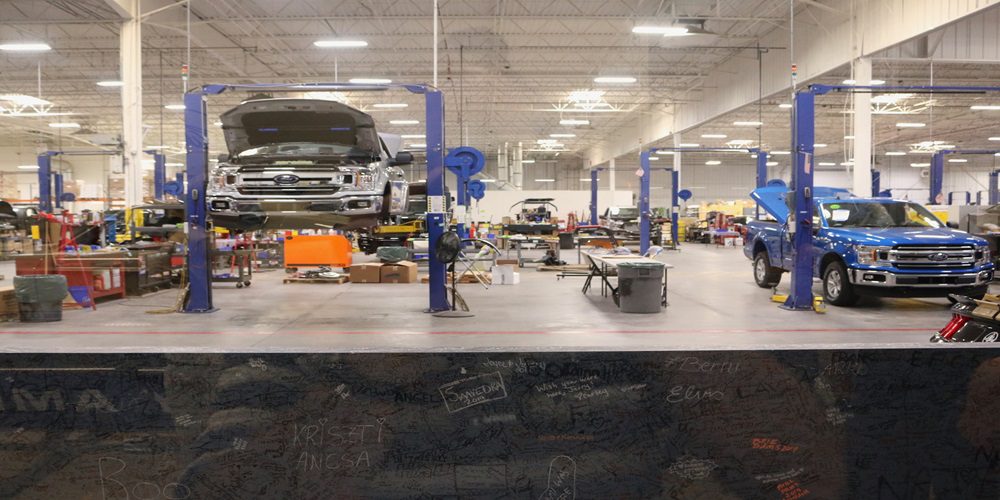Are you puzzled by the terms “automobile technology” and “automotive technology” that are often thrown around in discussions about cars? You’re not alone! These two phrases may sound similar, but they actually refer to distinct aspects of the ever-evolving world of automobiles. In this blog post, we’ll dive into the fascinating realm of automobile and automotive technology, unraveling their differences to help you better understand these integral components driving innovation in the automotive industry. So gear up and join us on this enlightening journey as we demystify the varied realms of automobile vs. automotive technology!
Introduction.
In today’s fast-paced world, it is easy to mistake similar terms for one another. One such example is that of automobile technology and automotive technology. While these two may seem interchangeable, there are subtle differences between them that are often overlooked. In this blog article, we will dive deeper into what sets these two technologies apart and why it is important to understand their differences.
Automobile Technology:
Firstly, let us define what an automobile is. An automobile refers to any type of self-propelled vehicle designed for transporting people or goods. This includes cars, buses, trucks, and even motorcycles. Therefore, automobile technology refers to the advancements made in various aspects of designing, manufacturing, operating and maintaining automobiles.
The earliest forms of automobiles date back to the late 19th century with inventors like Karl Benz and Henry Ford paving the way for modern-day vehicles. Since then, there have been continuous advancements in automobile technology to make transportation more efficient, comfortable and safer for both drivers and passengers.
Some key areas where automobile technology has made significant progress include engine performance and efficiency, safety features like airbags and anti-lock braking systems (ABS), as well as entertainment systems such as Bluetooth connectivity and advanced navigation systems.
Automotive Technology:
On the other hand, automotive technology refers specifically to electronic systems used within a car that manipulate its operations or assist with driving tasks. These include advanced driver assistance systems (ADAS) such as lane departure warning and automatic emergency braking, as well as entertainment systems like touch screen displays and voice recognition software.
Automotive technology has evolved rapidly in recent years with the rise of electric and self-driving cars. These advancements not only bring convenience and comfort to drivers but also improve safety by reducing human error.
Definition of Automobile Technology: Definition and explanation of automobile technology, including its history and evolution.
Automobile technology is a term that refers to all the advancements, systems and tools utilized in the creation, operation and maintenance of automobiles. It is a constantly evolving field that has changed significantly over time since the invention of the first motorized vehicle.
The history of automobile technology can be traced back to 1769 when Nicolas-Joseph Cugnot built the first self-propelled mechanical vehicle. This was followed by numerous inventions and developments, including the steam-powered horseless carriage by Oliver Evans in 1805 and later on Karl Benz’s gasoline-powered car in 1886. These early technological breakthroughs paved the way for what we know today as modern automobiles.
One significant aspect of automobile technology is its constant evolution and advancement over time. From simple hand-cranked engines to sophisticated computerized systems, automotive technology has come a long way. The rapid pace of technological innovation has enabled vehicles to become more efficient, safe, and environmentally friendly.
Today’s automobiles are equipped with various advanced technologies such as electronic fuel injection systems, anti-lock braking systems (ABS), crash avoidance systems, lane departure warning systems, navigation systems, adaptive cruise control, among others. These innovations have greatly improved performance and safety while also reducing emissions.
Beyond these complex systems lies the underlying principle that powers them all – integration between mechanics and electronics. Automobile manufacturers strive for optimum integration between these two components to create better-performing vehicles that are more responsive to drivers’ needs.
Therefore, it can be said that automobile technology is not just about the physical components of a vehicle, but also the interconnected systems and software that make it function. In addition, with the rise of electric and autonomous vehicles, automobile technology is constantly pushing boundaries and shaping the future of transportation.
Definition of Automotive Technology: Definition and explanation of automotive technology, highlighting how it differs from automobile technology.
Automotive technology refers to the advancements and innovations in vehicles and their supporting systems, such as engines, transmissions, electrical systems, and safety features. It encompasses both the design and development of these components, as well as their integration into a functional vehicle. On the other hand, automobile technology is a broader term that covers all aspects of automobiles, including automotive technology.
One key difference between automotive technology and traditional automobile technology is the focus on incorporating advanced technologies into vehicles. While automobile technology primarily deals with improving overall performance and functionality of cars, automotive technology goes beyond that by integrating cutting-edge electronics, software developments and connectivity features.
For instance, automotive technologies such as Advanced Driver Assistance Systems (ADAS) are designed to enhance safety by providing real-time information about potential hazards and assisting drivers in avoiding collisions. These technologies use various sensors like cameras or radar to continuously monitor surroundings while driving. In contrast, traditional automobile technologies mainly focused on improvements in engine power or fuel efficiency.
Another significant aspect where these two terms differ is their approach towards sustainability and environmental impact. With growing concerns over climate change and depleting resources, automotive companies have been investing heavily in developing eco-friendly solutions for transportation. Automotive technology focuses on finding alternative sources of energy for vehicles such as hybrid or electric motors rather than relying solely on fossil fuels like gasoline or diesel.
Furthermore, automotive technology also includes advancements in manufacturing methods that aim at reducing carbon emissions during production processes. For example, lightweight materials such as carbon fiber are being widely used in modern cars to minimize the weight and, in turn, reduce fuel consumption.
In summary, while automobile technology deals with conventional aspects of car engineering, automotive technology is a newer and more advanced subset that integrates electronics, software developments, and sustainability principles to create more efficient and safer vehicles.
Key Differences between Automobile Technology and Automotive Technology:
As the fields of technology and engineering continue to advance, it is essential to understand the key differences between related concepts. In this article, we will delve into the similarities and differences between automobile technology and automotive technology.
Automobile Technology
Automobile technology primarily focuses on the design, development, and production of vehicles such as cars, trucks, motorcycles, and other transportation devices. It involves the use of advanced technologies in various aspects of vehicle manufacturing, including aerodynamics, electronics, and mechanics.
One significant aspect of automobile technology is its emphasis on creating efficient and eco-friendly vehicles. This includes developing alternative fuel sources such as electric or hybrid engines and incorporating features like automatic start-stop systems to conserve fuel consumption.
Moreover, automobile technology also plays a crucial role in improving safety features in vehicles. The development of advanced driver-assistance systems (ADAS) – including lane departure warning, adaptive cruise control, and emergency braking systems – has significantly reduced the number of accidents on the roads.
Automotive Technology
On the other hand, automotive technology refers to a more comprehensive field that encompasses not only automobiles but all types of motorized transportations such as buses, trains, ships, aircrafts, etc. It deals with designing efficient propulsion systems for these vehicles by utilizing different types of engines like diesel engines or gas turbines.
Additionally,
automotive technology looks at optimizing overall vehicle performance through constant research and advancements in areas such as suspension systems and transmissions. This is essential for providing smooth rides with minimal strain on drivers or passengers.
Conclusion
In today’s fast-paced world, automobile technology and automotive technology are constantly evolving. It is important to understand the differences between the two in order to keep up with the latest advancements and make informed decisions about our vehicles. While both focus on the development of vehicles, automobile technology primarily deals with design and construction while automotive technology encompasses a broader range including maintenance, repair, and new innovations. As we move towards a more technologically advanced society, it will be interesting to see how these fields continue to intertwine and shape the future of transportation.



































